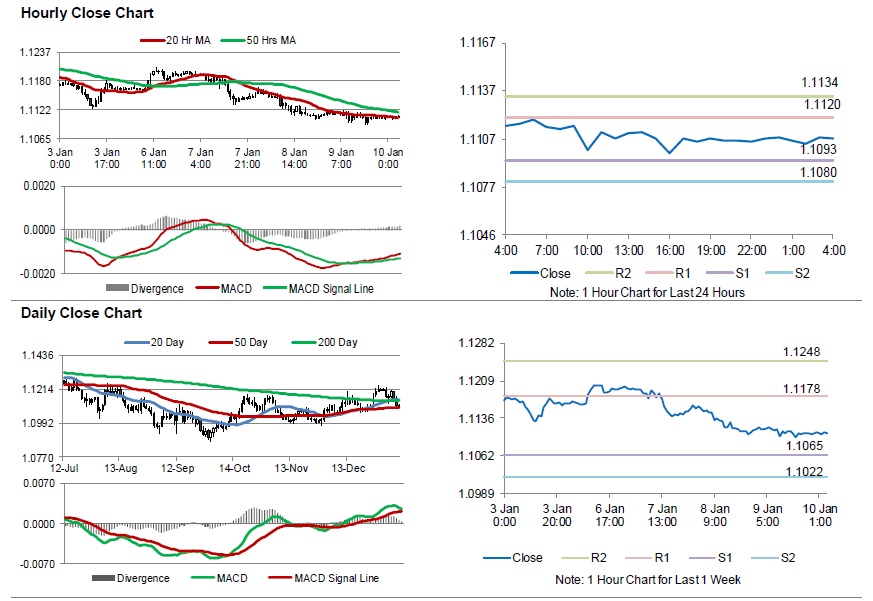For the 24 hours to 23:00 GMT, the EUR slightly declined against the USD and closed at 1.1107.
On the data front, Euro-zone’s unemployment rate remained unchanged at 7.5% in November, meeting market expectations and marking its lowest level since 2008.
Separately, in Germany, seasonally adjusted trade surplus narrowed €18.3 billion in November, following a revised surplus of €20.4 billion in the previous month. Market participants had expected the nation’s surplus to drop to €20.0 billion. Moreover, the seasonally adjusted industrial production rose 1.1% on a monthly basis in November, more than market anticipations for an advance of 0.7%. In the previous month, industrial production had registered a revised drop of 1.0%.
In the US, data showed that the number of Americans filling for unemployment benefits declined for the fourth consecutive week to a level of 214.0K in the week ended 03 January 2020, surpassing market consensus for a fall to a level of 220.0K. In the prior week, initial jobless claims had recorded a revised reading of 223.0K
In the Asian session, at GMT0400, the pair is trading at 1.1107, with the EUR trading flat against the USD from yesterday’s close.
The pair is expected to find support at 1.1093, and a fall through could take it to the next support level of 1.1080. The pair is expected to find its first resistance at 1.1120, and a rise through could take it to the next resistance level of 1.1134.
Amid lack of macroeconomic releases in the Euro-zone today, traders would keep an eye on the US nonfarm payrolls, average hourly earnings and unemployment rate, all for December, set to release later in the day.
The currency pair is showing convergence with its 20 Hr moving average and trading below its 50 Hr moving average.

